In the B2B space, where speed and efficiency are king, AI is something I view not as a luxury investment but as the very bedrock of modern Revenue Operations (RevOps). AI, at its very basic level, will be able to reshape B2B marketing and sales landscapes due to its power in analyzing huge data sets, automation of most of the time-consuming types of work, and provision for personalized customer interactions. At the vanguard of this revolution is HubSpot, a leader in CRM and marketing automation, which offers a robust suite of AI tools designed to bolster the efficacy of marketing and sales initiatives profoundly.
As a RevOps leader and strategist, I have navigated the complexities of integrating these technologies into large-scale operations to drive business growth effectively. This guide is aimed at providing insights on how other RevOps leaders can use HubSpot's AI capabilities, specifically those categorized under Marketing, Sales, CMS, and Operations, to smoothen operations and strategic engagements.
HubSpot’s AI Tools Categorized by Functional Group
Marketing AI Tools
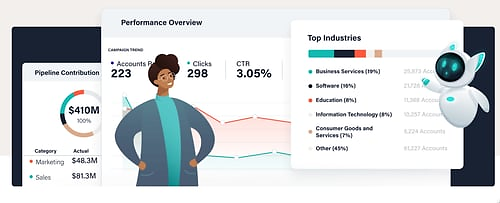
ChatSpot: Unleashing AI-Powered Engagement in B2B Marketing and Sales
ChatSpot, HubSpot’s revolutionary AI-powered tool, epitomizes the integration of artificial intelligence within B2B marketing and sales frameworks. This tool is designed to optimize customer interactions, automate content creation, and deliver in-depth market insights, which are crucial for RevOps leaders aiming to enhance operational efficiencies and drive strategic engagements. Here’s a detailed exploration of ChatSpot’s functionalities:
Comprehensive Capabilities of ChatSpot
Data Retrieval and Competitor Analysis
- Functionality: ChatSpot excels in extracting valuable data about companies, including funding details and other pertinent information, from vast databases and presenting this information through intuitive interfaces. This capability enables marketers to quickly gather competitive intelligence and refine their market positioning strategies.
- Applications:
- Competitive Intelligence: Empowers businesses to identify market trends and competitor strategies, facilitating proactive adjustments to their marketing plans.
- Market Insight: Provides a deep understanding of market dynamics, helping companies to tailor their strategies to better meet customer needs and capture market share.
Content and Image Generation
- Functionality: Beyond data extraction, ChatSpot is also proficient at creating relevant and engaging content. From drafting comprehensive blog posts to generating vibrant images suitable for digital marketing, ChatSpot can significantly reduce the content development lifecycle.
- Applications:
- Automated Content Creation: Streamlines the creation of marketing materials, enabling marketers to focus on strategy and execution rather than content generation.
- Enhanced Brand Presence: Improves the consistency and aesthetic appeal of marketing content across channels, which is vital for brand recognition and customer engagement.
Performance Tracking and Trend Analysis
- Functionality: ChatSpot’s ability to monitor and analyze industry trends and performance metrics makes it an indispensable tool for marketers. It not only tracks the effectiveness of marketing campaigns but also provides insights that are crucial for ongoing strategy refinement.
- Applications:
- Real-Time Analytics: Offers marketers real-time data on their campaigns, allowing for quick adjustments and enhanced outcomes.
- Predictive Insights: Utilizes historical data combined with current market trends to forecast future market conditions, aiding strategic planning and decision-making.
These capabilities of ChatSpot collectively streamline various facets of marketing and sales, making it a powerful ally for RevOps leaders. By integrating ChatSpot into their strategy, businesses can not only achieve high efficiency and effectiveness in their operations but also drive significant business growth in an increasingly competitive landscape.
Detailed Exploration of ChatSpot's Functionalities
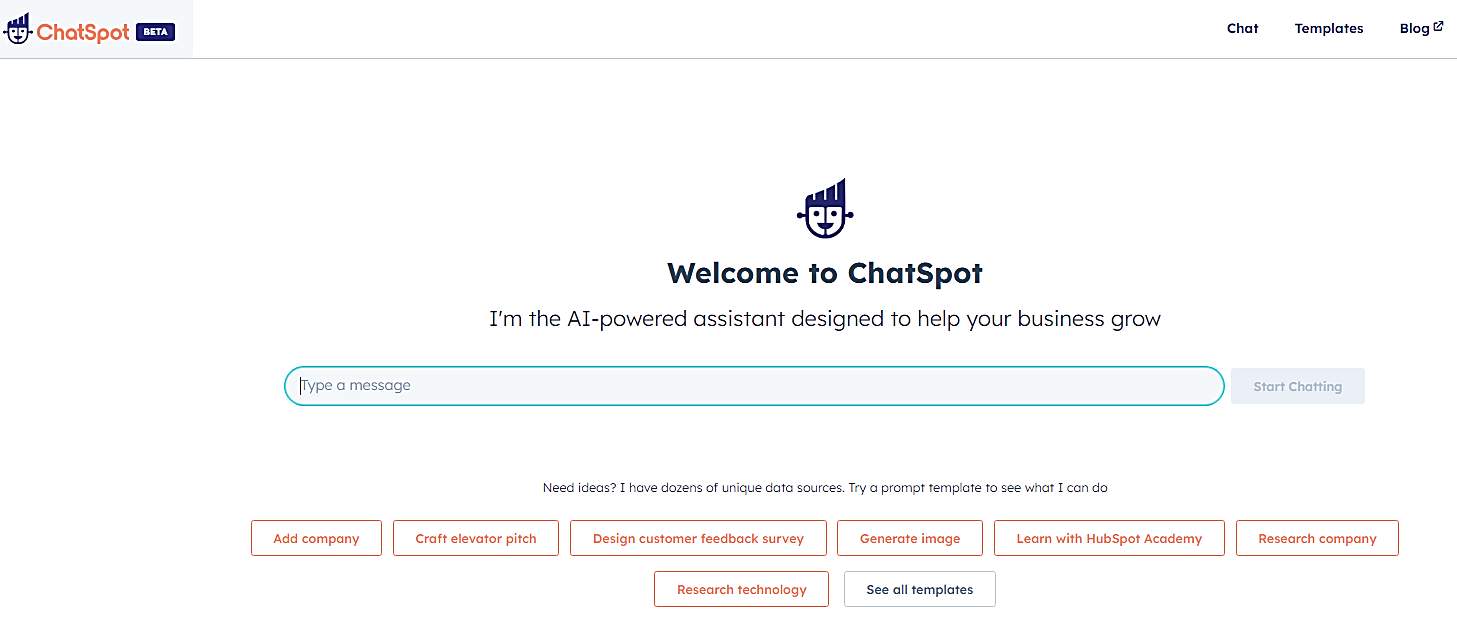
1. Data Retrieval and Competitor Analysis
In-Depth Company Insights:
- Functionality: ChatSpot harnesses advanced AI algorithms to extract detailed data about companies, including funding details, operational metrics, and strategic information. This process involves querying vast databases and presenting synthesized information through user-friendly interfaces.
- Applications:
- Competitive Intelligence: Enables businesses to gather actionable insights on competitors, analyzing their strengths, weaknesses, market positioning, and recent activities.
- Market Positioning Strategy: Assists companies in identifying market gaps and opportunities for differentiation, allowing them to tailor their strategies to leverage competitive advantages.
Competitor Analysis Tools:
- Rapid Competitor Identification: By simply entering a company’s domain, ChatSpot can list potential competitors within seconds, providing a quick overview of the competitive landscape.
- Market Trend Analysis: Evaluates long-term industry trends to forecast market movements and competitor strategies, preparing businesses to respond proactively.
2. Content and Image Generation
Automated Content Creation:
- Blog and Article Writing: Generates well-researched, SEO-friendly articles and blog posts that resonate with the intended audience, complete with backlinks and keyword optimization.
- Social Media and Ad Content: Crafts engaging content for social media posts and ad copies, designed to capture attention and drive engagement.
AI-Powered Image Generator:
- Custom Image Creation: Produces high-quality images for marketing collateral, websites, and promotional content, tailored to specific campaign requirements and branding guidelines.
- Speed and Efficiency: Reduces turnaround times from hours to minutes, enabling marketers to execute campaigns faster and with greater content diversity.
3. Performance Tracking and Trend Analysis
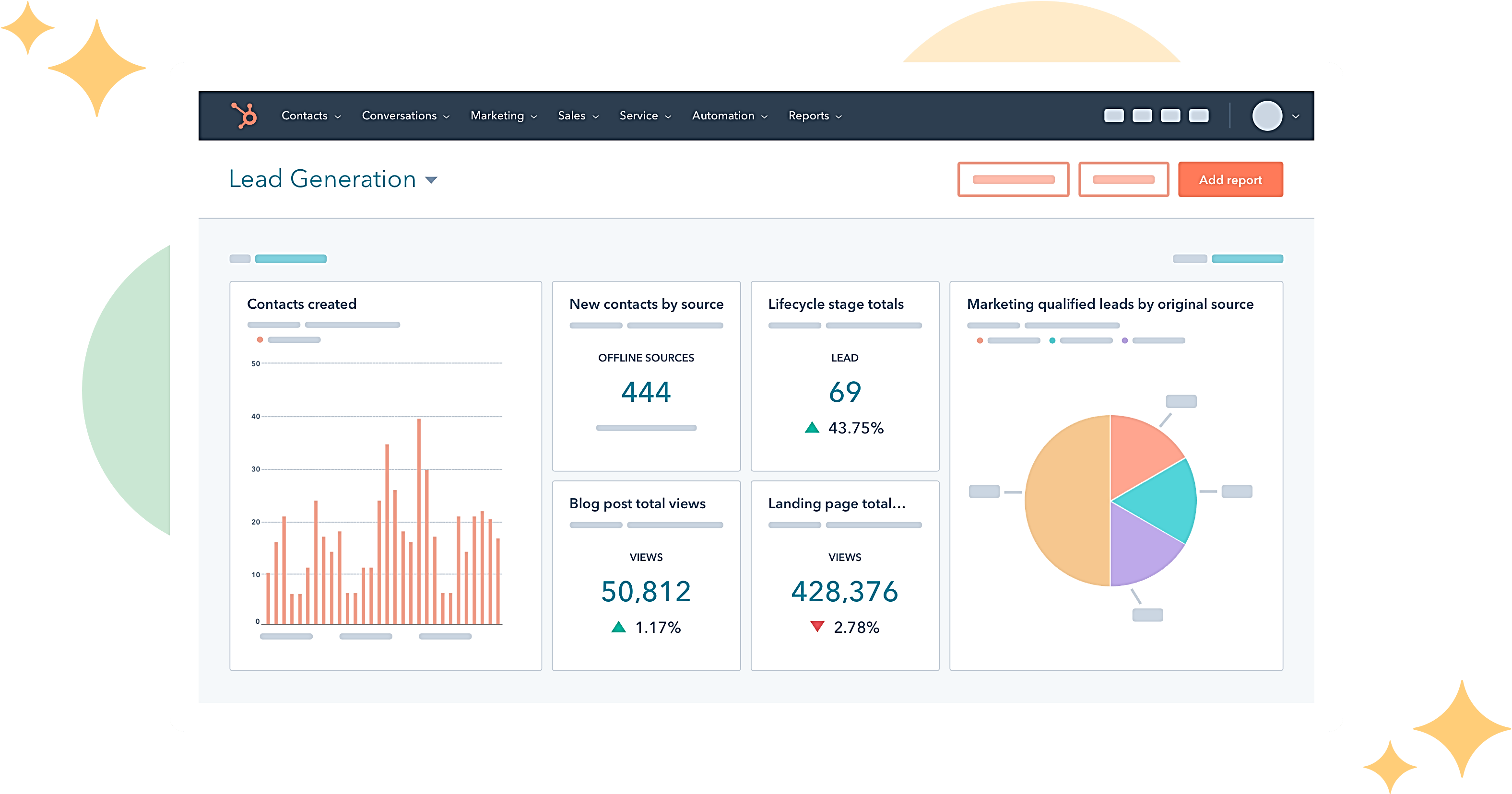
Market Dynamics Monitoring:
- Real-Time Analytics: Tracks real-time performance indicators and metrics across various platforms, providing marketers with up-to-the-minute data on campaign performance, customer engagement, and more.
- Predictive Trend Modelling: Uses historical data combined with market trends to predict future market behaviors and consumer responses, allowing companies to adjust strategies dynamically.
Industry Trend Reports:
- Automated Reporting: Generates comprehensive reports detailing industry conditions, benchmarking data, and predictive insights, which are essential for strategic planning and decision-making.
- Visualization Tools: Incorporates data visualization to make complex data sets accessible and understandable, facilitating clearer strategic discussions and decisions.
Strategic Implementation in RevOps
Optimizing Marketing and Sales Alignment
- Lead Qualification and Prioritization: Utilizes predictive analytics to score and prioritize leads based on their likelihood to convert, enabling sales teams to focus their efforts on the most promising prospects.
- Customer Journey Personalization: Enhances the customer experience by personalizing interactions and content delivery at each stage of the customer journey, based on individual behaviors and preferences.
Enhancing Customer Interactions
- Automated Chat Responses: Employs natural language processing (NLP) to understand and respond to customer inquiries instantaneously, improving response times and customer satisfaction.
- Integration Across Platforms: Seamlessly integrates with CRM systems and digital marketing tools, ensuring that all customer interactions are logged and accessible across departments.
Additional HubSpot AI Tools in Marketing
Email Marketing Tools
- Automated Personalization: HubSpot's AI-driven tools streamline email marketing by crafting personalized subject lines and optimizing body content to enhance reader engagement and improve campaign performance metrics such as open and click-through rates.
Ad Optimization
- Dynamic Advertising Campaigns: This tool uses AI to continuously test and modify ad variables — including placements, content, and targeting — to ensure optimal engagement and ROI, essentially automating the A/B testing process.
SEO Recommendations
- Strategic SEO Advice: HubSpot’s AI analyzes current trends and data to offer actionable SEO improvements, helping marketers optimize their content for better visibility and engagement.
Enhancing Revenue Operations with HubSpot's AI-Powered Sales Tools
In the realm of B2B sales, the integration of artificial intelligence (AI) has revolutionized how businesses approach lead management, sales forecasting, and customer engagement. HubSpot’s suite of AI-powered sales tools is at the forefront of this revolution, offering RevOps leaders advanced capabilities to optimize their sales processes, predict market trends, and enhance interaction strategies. Here we explore the practical applications and use cases of HubSpot's predictive lead scoring, AI-powered Sales Hub, and conversation intelligence tools within Revenue Operations (RevOps).
HubSpot’s AI Sales Tools: Driving Efficiency and Accuracy
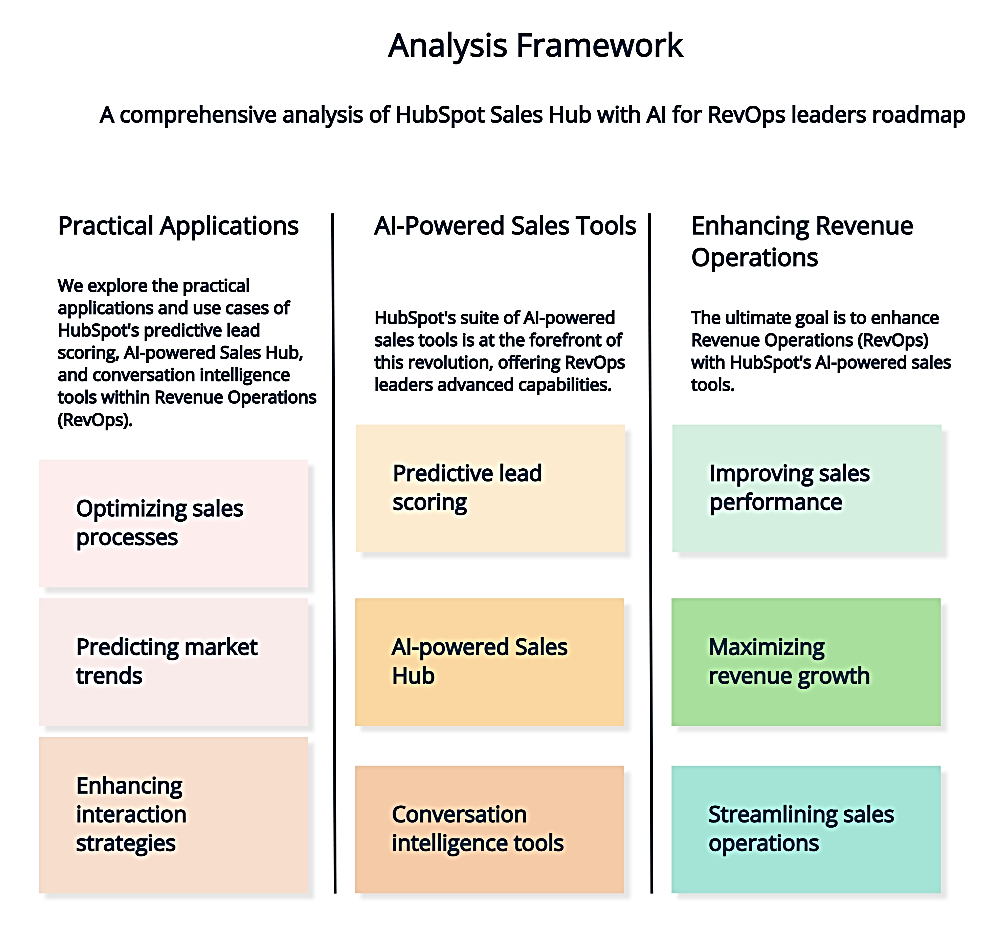
Predictive Lead Scoring
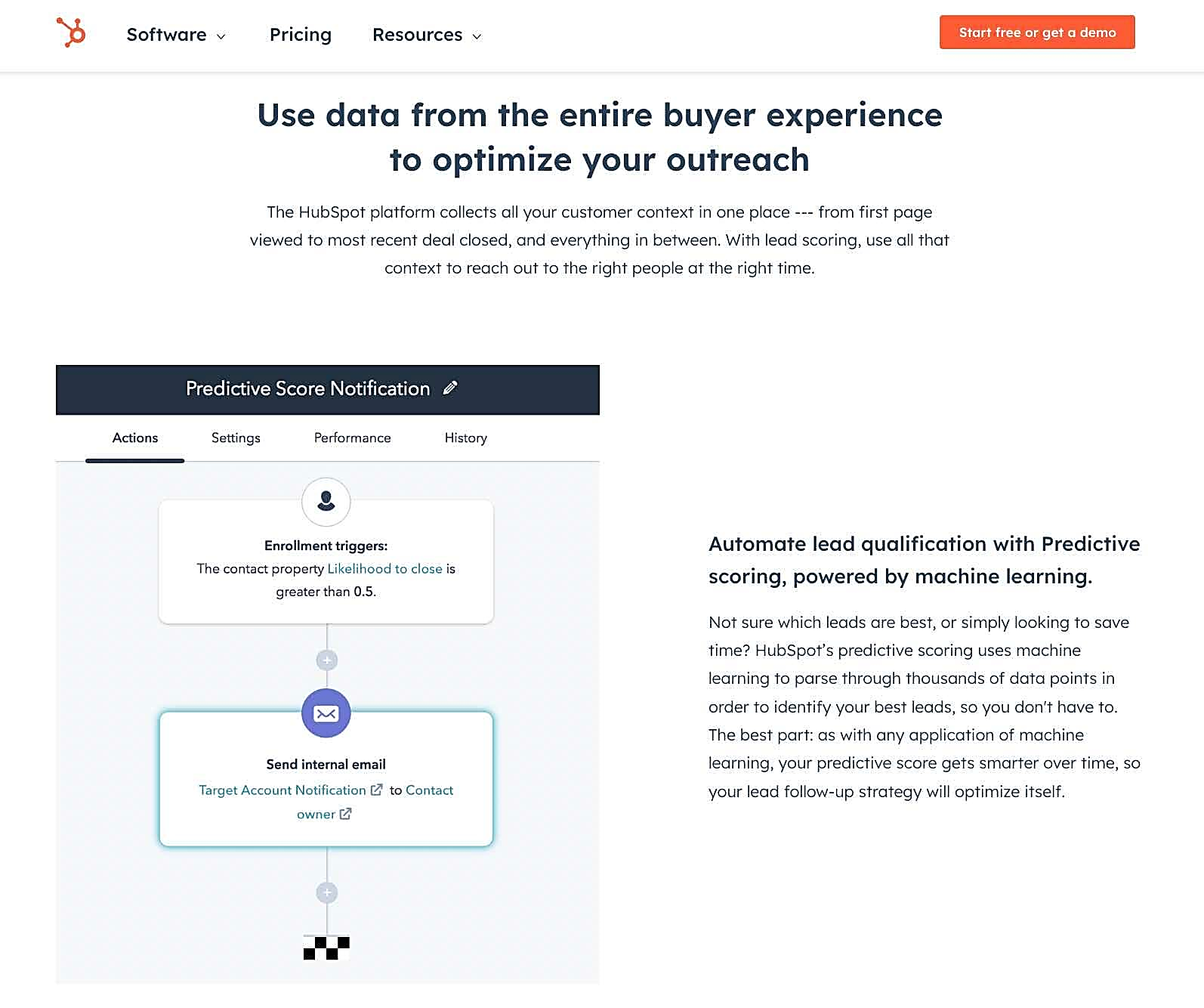
Overview: Predictive lead scoring uses AI to analyze past interactions and behavioral data to score leads on their likelihood to convert. This dynamic tool adapts and learns from new data, continually refining its scoring criteria.
Applications in RevOps:
- Efficient Lead Prioritization: By accurately scoring leads, sales teams can prioritize their efforts towards those with the highest conversion potential, thereby optimizing the sales funnel and improving overall efficiency.
- Resource Allocation: RevOps can use insights from lead scoring to better allocate resources across marketing and sales teams, ensuring that efforts are focused on the most promising leads.
Use Cases:
- Segmentation for Personalized Campaigns: Leads scored as high priority can be targeted with personalized marketing campaigns designed to move them through the sales funnel more effectively.
- Integration with Marketing Activities: Lead scores can inform marketing teams on content creation and campaign adjustments, ensuring that all interactions are aligned with the lead’s status and preferences.
AI-Powered Sales Hub
Overview: The AI-powered Sales Hub encompasses various tools that automate and optimize sales processes, including sales forecasting and email sequence optimization.
Applications in RevOps:
- Sales Forecasting: Utilizes historical data and AI algorithms to predict future sales trends, helping RevOps to strategically plan and allocate resources.
- Email Sequence Optimization: Determines the optimal timing and content for email sequences, increasing the effectiveness of communication efforts and the probability of closing deals.
Use Cases:
- Dynamic Resource Adjustment: By forecasting sales trends, RevOps can dynamically adjust staffing and budgeting to meet anticipated demand, improving operational agility.
- Automated Email Campaigns: Automated email sequences allow for timely follow-ups that are tailored to the lead’s interaction history and likelihood of conversion, thereby increasing engagement and conversion rates.
Conversation Intelligence
Overview: Conversation intelligence technology analyzes audio from sales calls to provide real-time feedback and post-call insights, which are crucial for training and refining sales pitches.
Applications in RevOps:
- Enhanced Sales Training: Provides objective, data-driven feedback on sales representatives’ performance, allowing for targeted coaching and professional development.
- Improved Sales Strategies: Insights into customer sentiments and preferences help sales teams refine their strategies and pitches to better meet customer needs and close deals more effectively.
Use Cases:
- Real-Time Performance Feedback: During or immediately after a sales call, representatives can receive feedback on their performance, allowing for quick adjustments and improved interaction quality.
- Post-Call Analysis and Strategy Refinement: Analyzing calls on a broader scale can reveal patterns and trends that inform future sales strategies and training programs, ensuring that the sales team adapts to changing customer preferences and market conditions.
Strategic Implementation for Maximum Impact
Phased Roll-Out:
- Start with a Pilot Program: Implementing AI tools in phases, starting with a pilot program that allows RevOps to measure effectiveness and make necessary adjustments before a full rollout.
Cross-Functional Collaboration:
- Integrate Insights Across Teams: Ensuring that insights from AI tools are shared across marketing, sales, and customer service teams to align strategies and optimize customer interactions.
Continuous Learning and Adaptation:
- Use Data-Driven Insights: Leveraging insights from AI tools to continually refine sales processes, train sales teams, and adapt strategies in real-time based on performance data.
CMS AI Tools
AI Website Builder
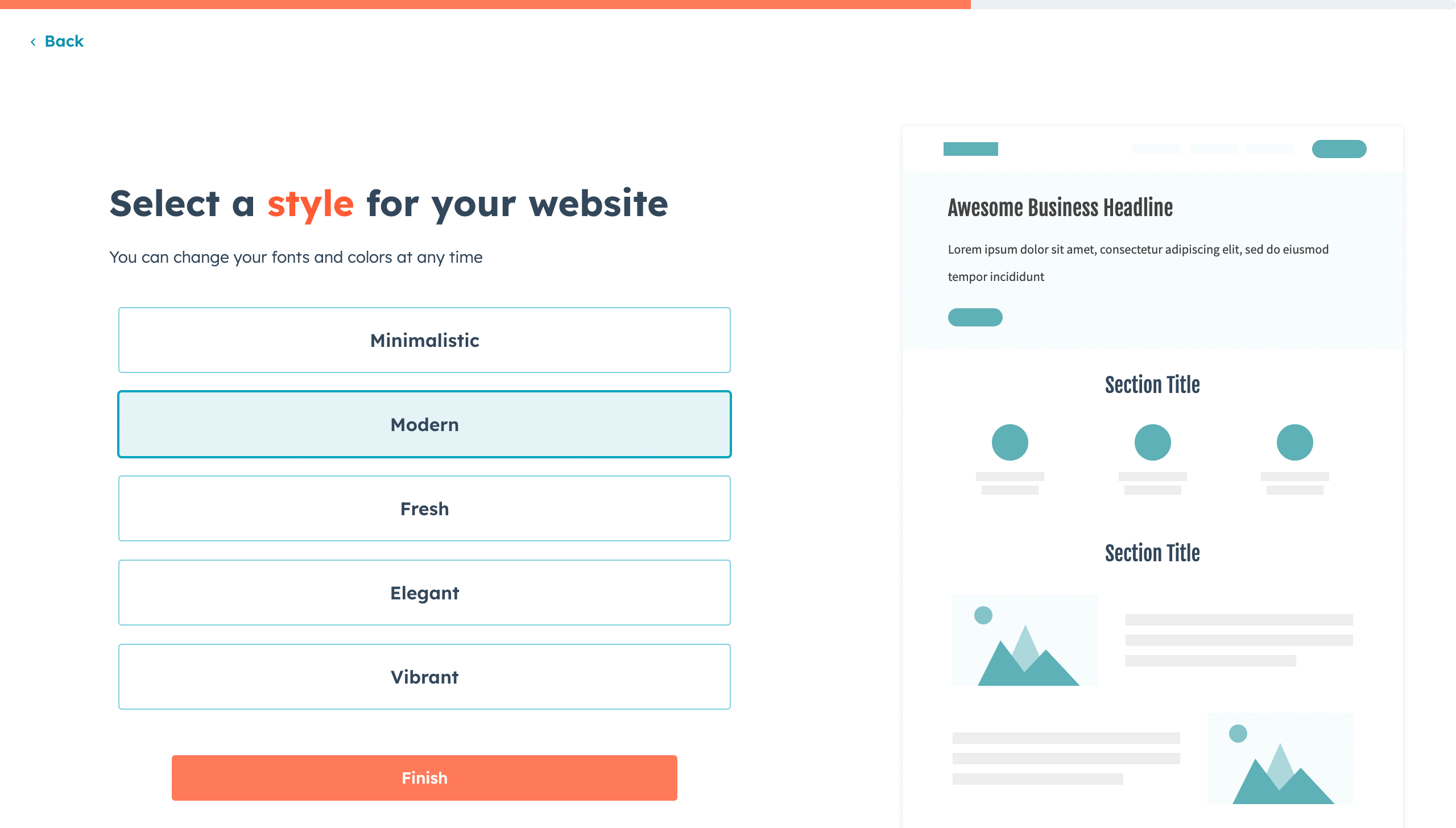
Simplified Web Design: HubSpot’s AI-driven website builder revolutionizes the process of website creation, making it accessible and efficient for users of all skill levels. By interpreting user inputs, the tool automatically generates a variety of design options that not only meet aesthetic standards but also functional requirements.
- Functionality: This tool simplifies the website design process by using AI to interpret user inputs and automatically generate comprehensive design options. This technology allows for the quick setup of websites that are both visually appealing and highly functional.
- Benefits:
- Accelerated Deployment: Rapidly produces website designs, significantly cutting down the time traditionally required to go from concept to live site.
- Reduced IT Dependency: Users can execute high-quality designs without extensive technical knowledge, reducing the need for IT intervention and allowing marketers more direct control over their digital presence.
- Applications:
- Marketing Agility: Enables marketers to quickly launch new promotions and campaigns by significantly reducing the time needed to deploy new sites or update existing ones.
- Brand Consistency: Maintains brand standards across websites effortlessly, ensuring that all visual elements align with the company’s branding guidelines.
AI Content Generation
Streamlined Content Creation: HubSpot’s AI content generation tool enhances content marketing strategies by producing a wide range of content types. From blog posts to social media updates, this tool ensures that all content is not only created faster but is also customized to engage the intended audience effectively.
- Functionality: Utilizes advanced AI to generate content across multiple formats, including blogs, articles, social media posts, and more. This tool adapts to various content needs and styles to produce relevant and engaging material.
- Benefits:
- Efficiency in Content Production: Dramatically increases the speed of content creation, allowing for more consistent and frequent updates across all marketing channels.
- Content Relevance and Engagement: Ensures that all content is tailored to the audience’s preferences and behaviors, which enhances engagement and fosters stronger customer relationships.
- Applications:
- Scalable Content Strategies: Supports the scaling of content production without a corresponding increase in resources, enabling businesses to enhance their content output as they grow.
- Personalization at Scale: Automatically personalizes content for different segments of the audience, ensuring high relevance and engagement without manual efforts.
Streamlining RevOps with HubSpot's AI Operations Tools: A Strategic Approach for Efficiency
In the fast-evolving domain of B2B sales and marketing, operational efficiency isn’t just about doing things faster; it’s about smarter, data-driven decision-making and process optimization. HubSpot’s AI-powered Operations Tools — namely, Data Clean Rooms, Operations Hub Automation, and Ticket Routing — provide Revenue Operations (RevOps) professionals with the advanced capabilities needed to streamline workflows, maintain data integrity, and enhance customer service efficiency. This detailed guide explores the functionalities of these tools and their pivotal role in transforming operational processes.
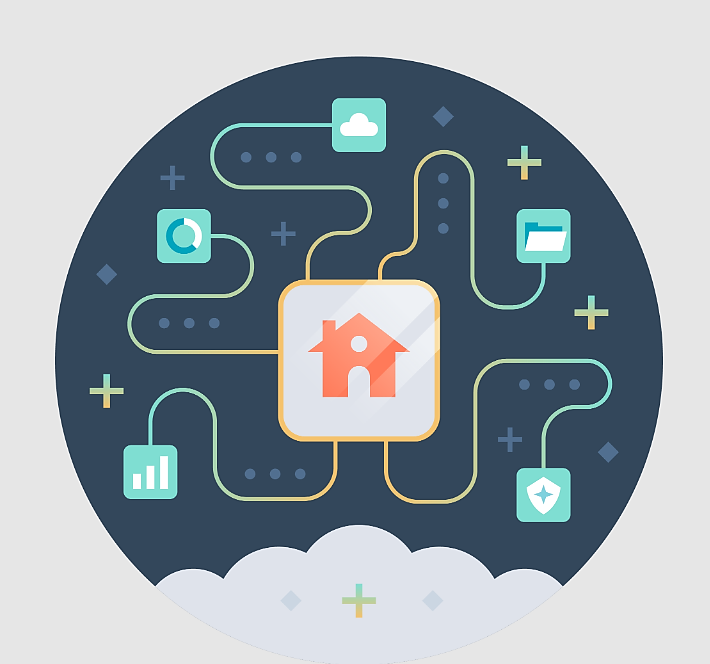
HubSpot’s AI Operations Tools Explained
Data Clean Rooms
Functionality:
Data Clean Rooms in HubSpot offer a sophisticated environment where large volumes of data from various sources are aggregated, cleaned, and made ready for use without compromising compliance or security. These tools are designed to handle complex data operations that ensure only high-quality, accurate data is used in decision-making processes.
Applications in RevOps:
- Enhanced Data Security and Compliance: Provides a secure platform for sensitive data operations, ensuring that all data handling complies with legal and corporate standards.
- Unified Data Repository: Creates a single source of truth for all organizational data, which simplifies analysis, reporting, and decision-making.
Strategic Impact:
- Reliable Data Foundation: Establishes a reliable baseline of data quality that supports all further analyses and business intelligence operations, ensuring decisions are based on accurate and timely information.
- Increased Operational Efficiency: Reduces the time and resources spent on manual data cleaning and integration tasks, allowing teams to focus on strategic activities that drive business growth.
Operations Hub Automation

Functionality:
Operations Hub Automation extends beyond basic automation to provide deep integrations and sophisticated workflow enhancements that sync data across applications, streamline processes, and eliminate silos.
Applications in RevOps:
- Cross-Functional Data Synchronization: Ensures that data across marketing, sales, and customer service is synchronized in real time, which enhances collaboration and operational agility.
- Automated Workflows: Simplifies complex processes through intelligent automation that adapts to workflow conditions and triggers tailored actions.
Strategic Impact:
- Seamless Operational Flows: By automating routine and complex tasks, Operations Hub Automation minimizes errors and maximizes efficiency, crucial for maintaining competitiveness in dynamic markets.
- Enhanced Responsiveness: Improves the organization’s ability to respond swiftly to market changes and customer needs, thanks to efficient process management and real-time data availability.
Ticket Routing
Functionality:
Ticket Routing utilizes AI to intelligently categorize and assign customer support tickets to the appropriate personnel. This tool analyzes incoming requests, sorts them based on complexity and topic, and routes them accordingly to optimize resolution times and enhance service quality.
Applications in RevOps:
- Efficient Issue Resolution: Streamlines the process of ticket management by ensuring that tickets are quickly directed to the right agents, reducing wait times and improving customer satisfaction.
- Scalability and Flexibility: As ticket volume grows, AI-driven routing easily scales to meet demand without the need for proportional increases in staffing.
Strategic Impact:
- Improved Customer Service: Directly impacts customer satisfaction through faster response times and more accurate issue resolution, fostering better customer relationships.
- Operational Scalability: Allows customer service operations to handle higher volumes of requests with the same resources, which is ideal for growing companies.
Implementing AI for Operational Excellence
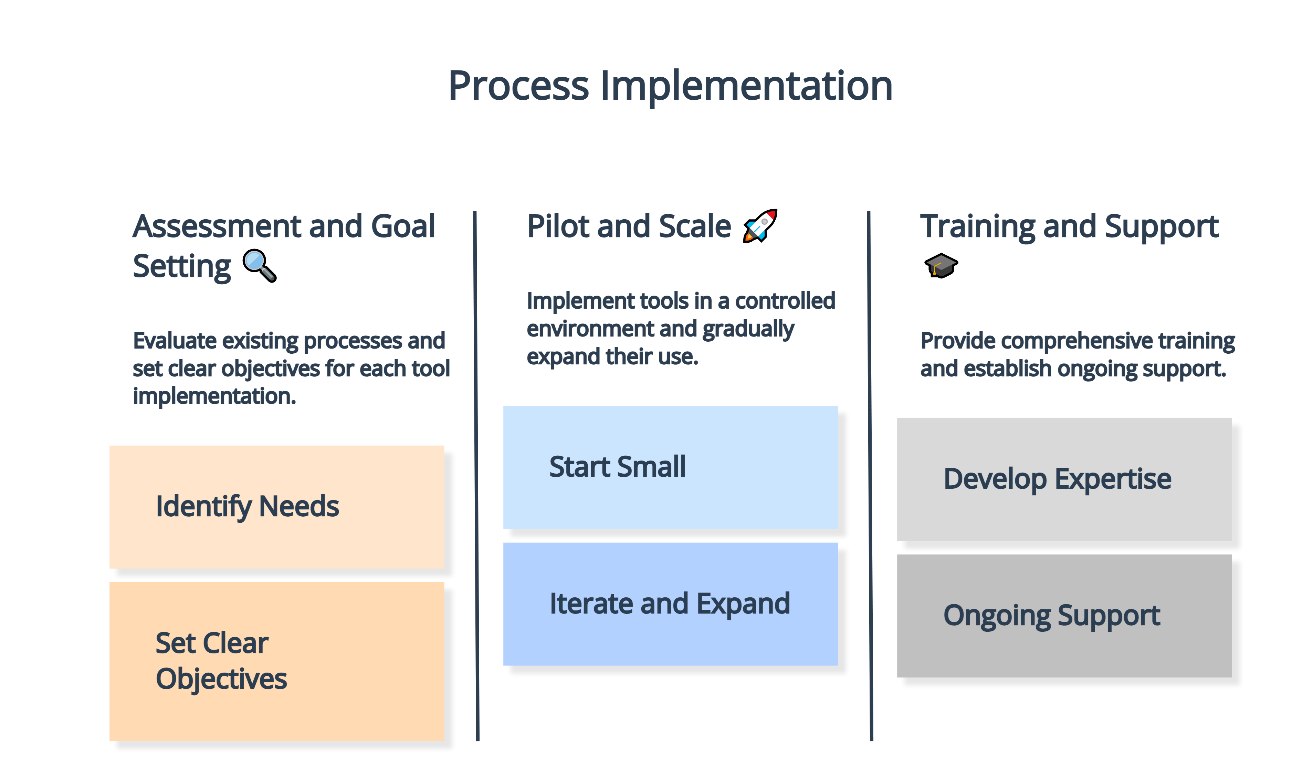
Strategic Planning and Execution
- Assessment and Goal Setting:
- Identify Needs: Evaluate existing processes to identify inefficiencies and areas where automation could have the most significant impact.
- Set Clear Objectives: Define what success looks like for each tool implementation, including expected impacts on time savings, customer satisfaction, and data integrity.
- Pilot and Scale:
- Start Small: Implement tools in a controlled, small-scale environment to gauge their impact and refine usage practices.
- Iterate and Expand: Based on pilot results, gradually expand the use of these tools, customizing and scaling their application across the organization.
- Training and Support:
- Develop Expertise: Provide comprehensive training for RevOps teams to ensure they understand how to use the AI tools effectively.
- Ongoing Support: Establish a support framework to assist teams post-deployment, including regular check-ins and updates as the tools evolve.
Strategic Implementation of HubSpot AI Tools for Enterprise RevOps Leaders
In the B2B enterprise marketing and sales landscape, the deployment of AI tools is no longer just an operational enhancement but a strategic necessity. HubSpot's suite of AI tools brings a game-changing advantage to Revenue Operations (RevOps) leaders aiming to revolutionize their processes, enhance customer engagement, and drive substantial growth. This guide delves into the strategic implementation and best practices for integrating these powerful tools within enterprise organizations, ensuring that the transition is smooth and the impact is profound.
The Need for AI in Enterprise RevOps
The complexity and scale of enterprise operations demand solutions that not only reduce manual workload but also improve decision-making and operational agility. AI in RevOps brings precision, efficiency, and scalability to these areas by:
- Automating Routine Tasks: Freeing up valuable resources, allowing staff to focus on strategic initiatives rather than mundane tasks.
- Enhancing Data Accuracy and Decision-Making: Providing tools like predictive analytics and lead scoring systems to refine marketing strategies and sales engagements.
- Improving Customer Interactions: Utilizing AI-driven insights to personalize customer communication, thereby increasing engagement and satisfaction.
Given these benefits, implementing HubSpot’s AI tools requires a thoughtful strategy that aligns with the organization's overall goals and operational dynamics.
Strategic Implementation and Best Practices
Phased Implementation Approach
- Evaluate and Prioritize:
- Assessment: Begin by assessing existing processes to identify potential areas where AI can make a significant impact. This involves understanding current bottlenecks or inefficiencies within sales, marketing, and customer service operations.
- Goal Alignment: Align AI integration goals with broader business objectives to ensure that the implementation will support overarching strategic aims.
- ROI Analysis: Prioritize tools that offer the most significant return on investment, particularly those that can either cut costs significantly or enhance revenue within a short period.
- Pilot Testing:
- Small Scale Trials: Roll out the selected AI tools on a small scale initially. This controlled environment allows for detailed observation of the tools’ impacts and provides a buffer to manage any issues that arise without widespread repercussions.
- Performance Metrics: Establish clear metrics to evaluate the tools’ performance during the pilot phase. These should include operational efficiency, data accuracy, user satisfaction, and contribution to revenue growth.
- Full Deployment:
- Feedback Integration: Use insights and feedback from the pilot phase to tweak processes and tool settings before full deployment.
- Staged Rollout: Implement the tools across the organization in stages, not all at once. This staged approach helps manage the organizational impact and allows for adjustments as the rollout proceeds.
Focus on Data Quality
Data Integrity Maintenance:
- Regular Cleansing: Establish routines for regularly cleaning and validating data used by AI tools. This ensures the tools are working with the most accurate and up-to-date information.
- Data Audits: Periodically audit data management practices to identify and rectify any issues, such as data silos or corruption, which could affect AI performance.
Cross-Functional Training
Comprehensive Education:
- Initial Training Sessions: Conduct comprehensive training sessions for all relevant staff before the tools go live. These sessions should cover not only how to use the tools but also how to interpret the insights they provide.
- Ongoing Learning: AI tools evolve, and their best practices can shift. Ongoing training sessions will help staff stay informed about the best ways to leverage these tools effectively.
Integration and Collaboration
Enhancing Team Collaboration:
- Cross-Departmental Workflows: Ensure that the AI tools are integrated in a way that enhances collaboration across departments. For example, data insights from AI-driven market research should be accessible to both marketing and sales teams to refine strategies dynamically.
- Unified Data Platforms: Utilize unified platforms that allow different departments to access and act upon the same data insights in real-time.
Conclusion
For us as RevOps leaders in enterprise organizations, integrating AI tools is a strategic initiative that transcends mere operational efficiency and ventures into enhancing the intelligence of our operations. HubSpot’s AI suite provides a comprehensive array of tools tailored to meet the unique challenges large organizations face, from predictive lead scoring to advanced data management solutions.
Through my experience, adopting a phased implementation strategy, maintaining rigorous data quality, and committing to comprehensive cross-functional training are crucial steps that enable enterprises to leverage AI fully. This not only meets but also exceeds their operational and strategic goals. This AI-driven revolution is about more than just keeping pace with technological trends—it's about setting the tempo for innovation in B2B marketing and sales, fostering a culture of continuous improvement and significant growth.
By sharing these strategies and insights, I aim to empower other RevOps leaders to harness these advanced tools effectively, ensuring their companies not only survive but thrive in this fast-evolving digital landscape.
I encourage all RevOps professionals and enterprise leaders to share their insights or pose questions in the comments below. Whether it’s your experiences with integrating AI within your processes, challenges you've faced, or strategies that have worked, your contributions are invaluable to fostering a rich, informed discussion. Let's collaborate to refine our approaches and push the boundaries of what's possible in our fields with AI. Please, proactively share your experiences and tips to help build out our collective knowledge base on navigating enterprise processes under RevOps.



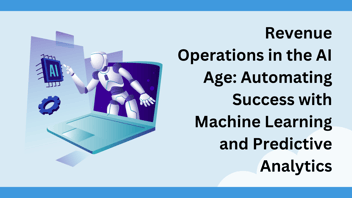
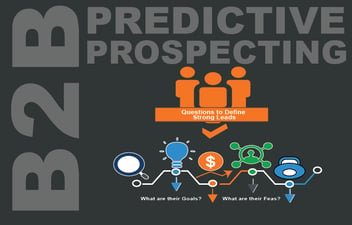
Leave a Comment